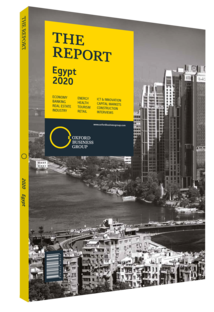How new road systems support Egypt's economy
Egypt’s growing population and dynamic economy have resulted in a need for greater infrastructure development over recent years. Given that cars remain Egypt’s most popular mode of personal transportation – as do trucks for carrying cargo – this need is seen most notably in its roads; Cairo and many other cities in the country display chronic traffic congestion. As such, the Egyptian government has spearheaded significant investment in the road system to ensure that it will have the capacity to cope with long-term increases in freight and car journeys. As of end-2019 Egypt’s National Roads Project – implemented in 2014 – had developed 4500 km of a pledged 7000 km of new roads in the country. An improved road network will support economic development, reduce traffic congestion and improve overall safety.
Government Efforts
The government has made additional investments in the land transport segment following the creation of the National Roads Project, and in early 2020 the Ministry of Transport announced a budget of $9.8bn for road development. In FY 2018/19 over 2000 road projects were carried out, and another 2000 were completed in FY 2019/20. While focus is on key projects in Cairo and Alexandria, a number of other regions in the country will also see substantial road building, maintenance and upgrades.
Egypt’s Armed Forces Engineering Authority has become a major player in large-scale construction projects in recent times. The authority oversees 2300 projects and approximately 5m civil employees across a number of sectors including agriculture, mining, seafood and infrastructure.
Urban Roads
According to the World Bank, the Greater Cairo Metropolitan Area is home to around one-fifth of Egypt’s population – approximately 19m people – a figure that is expected to rise to 24m by 2027. This sharp increase will likely create additional pressure on road infrastructure in the capital. Despite lockdown measures implemented during the Covid-19 pandemic, construction activity continued on Cairo’s new road projects. The projects are part of an $895m government plan to reduce road congestion and build 40 new bridges. While the majority of the work is concentrated in East Cairo, construction is also being carried out elsewhere – including on the Ahmed Handy Tunnel 2 link, which will run under the Suez Canal and is slated for completion in mid-2021. An additional $142m was spent building road infrastructure in New Alamein City, an urban development to the west of Alexandria on Egypt’s north coast.
One significant road project is the recently completed suspension bridge that crosses the Nile River at Warraq Island to the north of Cairo and forms part of a link stretching from the Red Sea to the northwest extremity of Egypt’s Mediterranean coast. It was inaugurated by President Abdel Fattah El Sisi in May 2019 and is the widest such bridge in the world.
Motorways
Given Egypt’s strategic geographic importance at the crossroads of Africa, Europe and the Middle East, its infrastructure programmes also have regional economic implications. The Cairo to Cape Town road project, which was first discussed in the 1890s, has slowly re-entered the economic spotlight. Construction of Egypt’s section of the motorway began in mid-2015 and was completed in February 2019. The road begins in Alexandria and passes through Cairo and Aswan, south to the border with Sudan.
Egyptian territory includes another of the continent’s important motorways, which spans from Cairo to Dakar, passing from the Egyptian capital to Alexandria and west along the North African coast to the Senegalese capital. With the arrival of the African Continental Free Trade Agreement, alternatives to maritime and air transport via trunk roads will further facilitate intra-African trade. In early 2020 this mode became increasingly important due to the disruption of global maritime and air supply chains because of the Covid-19 pandemic, especially in regard to air freight.
You have reached the limit of premium articles you can view for free.
Choose from the options below to purchase print or digital editions of our Reports. You can also purchase a website subscription giving you unlimited access to all of our Reports online for 12 months.
If you have already purchased this Report or have a website subscription, please login to continue.

